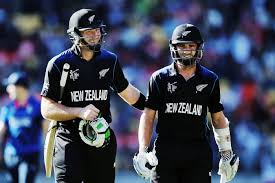
When ODI cricket was invented, it took players, coaches and strategists a while to adapt to the fact that they were no longer playing Test cricket. For example, the fact that 220/3 after 50 overs is great in Tests and terrible in ODIs was not immediately appreciated.
The first ever Cricket World Cup match was famously marred by an innings of 36 off 174 balls from Sunil Gavasakar, who went on to state that “I wasn’t overjoyed at the prospect of playing non-cricketing shots and I just got into a mental rut after that.”
Gavaskar’s Test record shows that he was an exceptionally capable batsman, so the initial adjustment to such concepts as “scoreboard pressure” and “required run rate” must have been a big one, and a psychological one.
It was solved when it was realised that strike rate is about as important as average runs scored for an ODI batsman, especially the closer the game gets to the last over.
T20 cricket is still new enough that original plays are still being thought up. Every year there are new innovations, or new variations on old ones. Some concepts have to be abandoned, some concepts have to be tweaked, and some concepts have to be synthesised out of wordless intuition and perception.
This essay suggests one radical concept: that we need to do away with the old concept of batting order, and to replace it with a batting dynamic.
The major advantage of thinking in terms of a batting dynamic is that it would help the Black Caps find a place in the T20 side for Ross Taylor, who is simply too good to be left out.
A batting dynamic means no longer having a batting order in terms of openers, a first drop, a middle order etc. It means (to simplify it) to have one accumulator and one hitter at the crease at all times.
The reasons for this are mathematical. It’s better to have one accumulator than two hitters, because the hitters can lose wickets in clumps very easily and cripple the team. But it’s better to have one hitter than two accumulators, because you only have 20 overs and batting too slowly will lose you the game just as surely as losing a pile of wickets.
It’s best to consider these to be entirely separate skills – which they are, until the real slog of the last few overs.
The Black Caps have made it to No. 1 in the world T20 rankings partially by opening the batting with who are at time of writing both in the top 8 in the world – Kane Williamson at 3 and Martin Guptill at 8.
In doing so, they have a world-class accumulator in Williamson and a world-class hitter in Guptill, so all is good.
The problems arise when the first wicket falls.
Under the old concept of a batting order, this wouldn’t matter much, as it seldom does in Tests and hardly matters in ODIs.
But when the first wicket falls in a Black Caps T20 innings, the team runs the risk of making two mistakes, namely having two accumulators or two hitters at the crease.
The concept of a batting dynamic means that we divide the batsmen into accumulators and hitters, and that we try not to have two of both until the last few overs when everyone hits.
So for the T20 side, one might open with Kane Williamson and Martin Guptill, with Williamson the designated accumulator and Guptill the designated hitter.
If Williamson is dismissed early, we send Ross Taylor in. This way, it becomes less likely that the opposition will run through our lineup, as happened in February this year.
Conversely, if Guptill is dismissed first, the next hitter in line comes in to bat – perhaps Colin Munro, Corey Anderson, Tom Bruce, Colin de Grandhomme or even Tim Southee.
It doesn’t matter who it is, as long as they have a licence to hit, because the emphasis is on avoiding having two accumulators at the crease. This way we can avoid burning through the overs while scoring too few boundaries and using up our 20 with piles of wickets in hand.
So if Kane Williamson carries his bat, then Ross Taylor will not take the crease until all the other hitters are out. This means that Taylor could bat anywhere between 3 and 7 depending on the hitting ability of the other batsmen and when Williamson is dismissed.
But if Williamson is out on the first ball then Taylor comes in to ensure that the strike is always rotated to the hitter at the other end.
The worst case scenario (besides being bowled out) is that all our hitters get dismissed and we’re left with Williamson and Taylor to finish the innings. Obviously this is still an excellent outcome.
The other point is that if we aim to always have one of Williamson or Taylor at the crease until the death (let’s say until the 15th over at least), then the choice of the other batsmen in the team becomes much more straight-forward: they can simply all be hitters, as it’s very unlikely that Williamson and Taylor will both get out early.
Statistically, one would expect this to have the effect of causing the Black Caps to win by smaller margins, but to win more games, as the variance of the scores will be reduced if there are fewer hit-and-miss batsmen at the crease.
– DAN McGLASHAN
